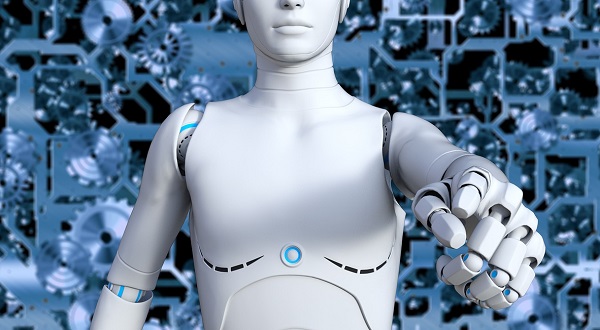
When was the last time you bought a product and had some questions on how to use it? Or maybe report an issue on the product you just bought? Like any other consumer, you probably went on their website to find help.
While browsing, a tiny window pops out asking if you need help. Since it's efficient and you need help, you engaged.
This chat window enables you to either ask questions or troubleshoot issues you are having. But did you know you are probably chatting to a chatbot?
These bots are powered by Natural Language Processing, or NLP for short, and there are various incarnations, from chatbots to voicebots, that help improve your customer experience. But which one is right for you?
A chatbot is an Artificial Intelligence (AI) program that elevates a customer's Digital Experience (DX) and answers their queries using a conversational platform out of predetermined key phrases or text-based signals. Because of their efficiency in dealing with repetitive or impossible tasks, chatbots are often used for customer service and marketing systems that integrate with social media platforms and instant messaging (IM) services.
According to Gartner, by the end of 2020, over 85% of customer interactions will be managed without a human. Chatbot Magazine found that organizations can reduce customer service costs by up to 30% using conversational chatbots. Some key factors driving the growth of the chatbot market are growing demand for chatbot across various industry verticals and its ability to focus on enhanced customer intelligence/engagement using AI.
Recent innovations in communication and texts is another reason chatbots became widely accepted. Facebook, Twitter, WeChat and Whatsapp have dominated the text-based market for years and now that these platforms allow for AI plugins, chatbots have become the channel where most customers are at. No wonder why 2020 is predicted to be the year of the bot.
A voicebot is a virtual ‘Bot’ or computer program that take in verbal speech, convert it to text, check it for accuracy, produce a response, and build that response from machine language into audible speech. Voicebots work by using speech-to-text technology. To accomplish this, voicebots require far more computing power and a lot of design to build. Voicebots are like chatbots but on voice or Voice IVR.
Since Apple introduced Siri in 2011, voice assistants have been integrated into smartphones. But they didn’t take off until the Amazon Echo and Google Home smart speakers were launched, in 2014 and 2016 respectively. Alexa, the Echo’s assistant, is equipped with smart speakers and able to listen to instructions without having to push a button.
It is predicted that smart speakers will eventually automate homes. It will make tasks simpler through the power of voice recognition. All things considered, this kind of chatbot has a greater utility to the end-users, empowering them to communicate hands-free.
Voice Assistant is a more advanced chatbot or voicebot that has an AI engine usually referred to as a neural network, allowing them to ‘learn’ with every new user input and adjust their corpus with every conversation. Machine Learning allows these intelligent digital assistants to have natural conversations with users, thanks to its ability to process free form phrases, nuance and small talk. These conversations can be in the form of a messaging layer but can also extend to entire websites and even voice or telephony interactions.
Now that you know the key distinction between chatbots, voicebots and virtual assistants, you are probably asking — which is the best bots to use for my business?
The answer is found by looking at automation as a holistic approach. It is not just about being trendy. It is about understanding your customers and trying to be where your customers want to interact with you.
It could be in-store automation or it could be several channels and surfaces you want to be building customer interactions. When you look at just text messaging services, whether it's WhatsApp or Facebook messenger, any of those tools could be dominant in your market. What is important is that your customers are already engaging with you on the channel you chose to integrate with AI technology.
Look into your target market and learn which channels they are communicating with you. Depending on your audience, you might have younger customers that prefer to chat on social media or on voice messaging apps. You might also have older market that prefers voice support. Your customer interactions could require smarter conversations.
In global experience companies like Everise, the first stage of any client work involves the analysis of data. By creating algorithms that analyze a large amount of data, they can develop a profile of who the potential user is. This will give you a better picture of the kinds of communication channels users are likely to engage.
As mentioned, it is not about being trendy or using the latest technology. The focus is to ensure that the client gets a solution that will deliver unique digital experiences. The aim is to create an outstanding user interface and intuitive design.
So, with implementing AI as part of your digital experience, it is not just about using a chatbot, voicebot, or virtual assistant or other CX technology. It is more of understanding your brand and the customers that interact with it. Only through this will you determine which kind of AI solution is the best for your business.
Related Posts and Case Studies: